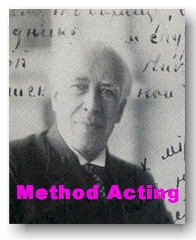[ advertising space : webmaster ]
Enter the name of a movie, TV show, or person and then click "Go" to get more information about it/them from imdb.com.

FILM DIRECTING online; if in class, must subscribe!

Films&Movies 2003 *
Directors Forum: if in class, I recommend to subscribe!
KEY TERMS: Glossary
DVD: Drama & Art House, Studio Specials & Classics, New & Future Releases, Cult Movies
filmmaking books

film books

Method for Directors?

ShowCases: 3 Sisters, Mikado, 12th Night, Hamlet, The Importance of Being Earnest, Dangerous Liaisons, Don Juan
prof. Anatoly Antohin Theatre UAF AK 99775 USA
The contents will be the place to sort it all out!
NEW: RULES page
Footage, Shots, Reshoot pages!
 amazon.com * movimaking online book * wikipedia
amazon.com * movimaking online book * wikipedia
2006
Summary
Montage ("to build") and Mise-en-scene ("to put into the scene") are two main concepts: they are inter-connected. My prime concern is the actor and mise-en-scene [ more in Digital Media Tutorial ]Notes
use floor plan form * Mise-en-scene (film) [main] Mise-en-scene from Yale *"What is Mise en scene? The phrase refers to how scenes are framed and staged when appearing in a movie. That is, are the actors outside? Inside? What surrounds them? Does a certain shot through a doorway frame a character just so? In film theory, it is sometimes used as a way to 'pick apart' a movie and write about it.
Originally a French term that mean 'placing on stage,' the term is now used in film studies to designate how a particular scene is framed. For example, where things appear and what they're surrounded by can play a big part in how you receive a movie emotionally.
What is in and out of focus in a scene is also important in how a viewer reacts to a scene. Focus directs the viewer's eyes to different things that the director wants them to pay attention to in a particular scene." [ Moov Goog ]
"In film theory Film theory seeks to develop concise, systematic concepts that apply to the study of cinema. Classical film theory provides a structural framework to address classical issues of techniques, narrativity, diegesis, cinematic codes, "the image", genre, subjectivity, and authorship. More recent analysis has given rise to psychoanalytic film theory, structuralist film theory, feminist film theory, and theories of documentary, new media, third cinema, and new queer cinema, to name just a few. See also film criticism.
Mise-en-scène [mizA~sEn] is one of the currently-dominant theories of conveying information in the cinema. It maintains that long takes and frequent camera moves are preferred over chopping up a scene through editing. It refers to everything that is to appear before the camera and its arrangement -- sets, props, actors, costumes, camera movements and performances. The term was coined by early French film critics and means literally "put into the scene" or "setting in scene." In auteur theory The Auteur Theory is a way of reading and appraising films through the imprint of an auteur (French: author), usually meant to be the director.
In the 1954 essay Une certaine tendence du cinéma français François Truffaut coined the phrase "la politique des auteurs", and explained that the worst of Jean Renoir's movies would always be more interesting than the best of Jean Delannoy's. He and his colleagues at the magazine Cahiers du Cinema recognized that moviemaking was an industrial process. But they proposed an ideal to strive for: using the commercial apparatus just the way a writer uses a pen. And so they valued the work of those who neared this ideal."
Mise-en-scene in theatre
To make a mise-en-scene page in film.vtheatre.net (on acting): watch the Al Pacino clip.
... light, set, costumes... [staging, including acting] = M II (craft, directing) + Mise-en-Scene I (analysis) and Mise-en-Scene III (theory)
slide show in film.vtheatre.net/forms/5.mise.html
...
 * Classes * Virtual Theatre * Bookmark vTheatre! Mailing List & News -- subscribe yourself * The Book of Spectator *
* Classes * Virtual Theatre * Bookmark vTheatre! Mailing List & News -- subscribe yourself * The Book of Spectator * 






 Anatoly Antohin
Anatoly Antohin